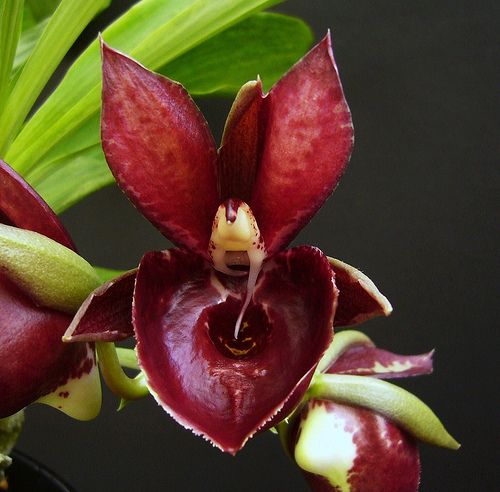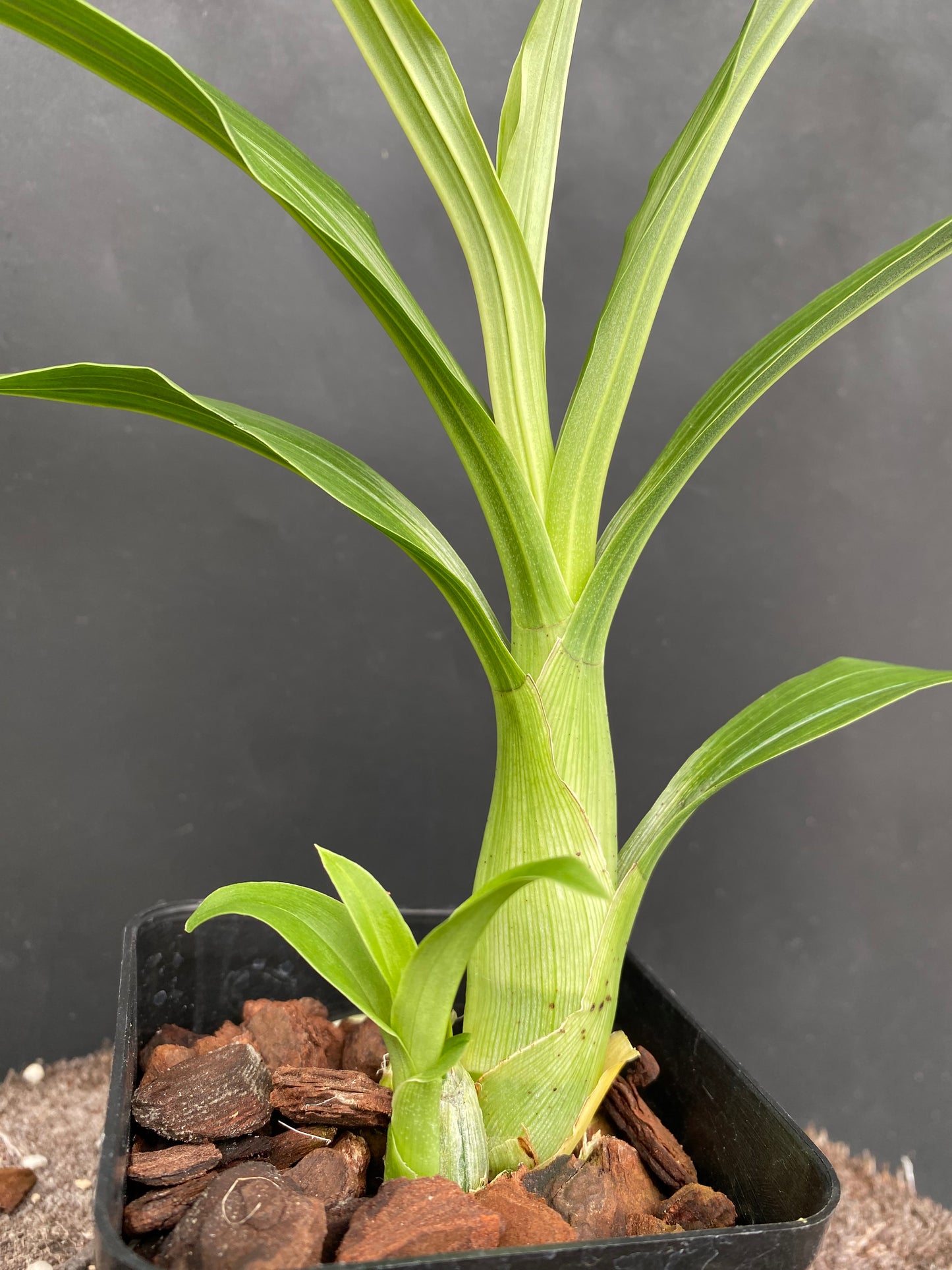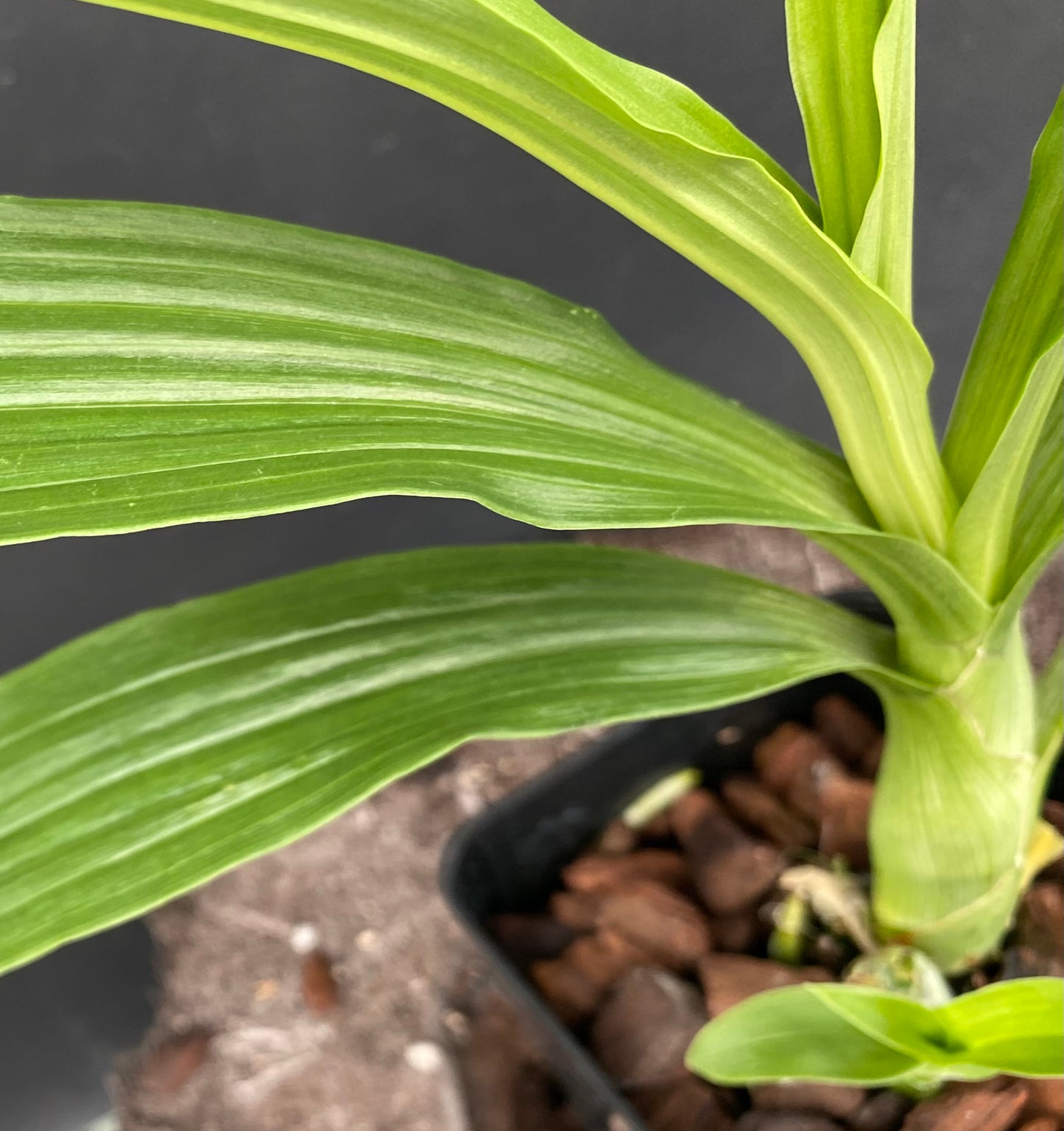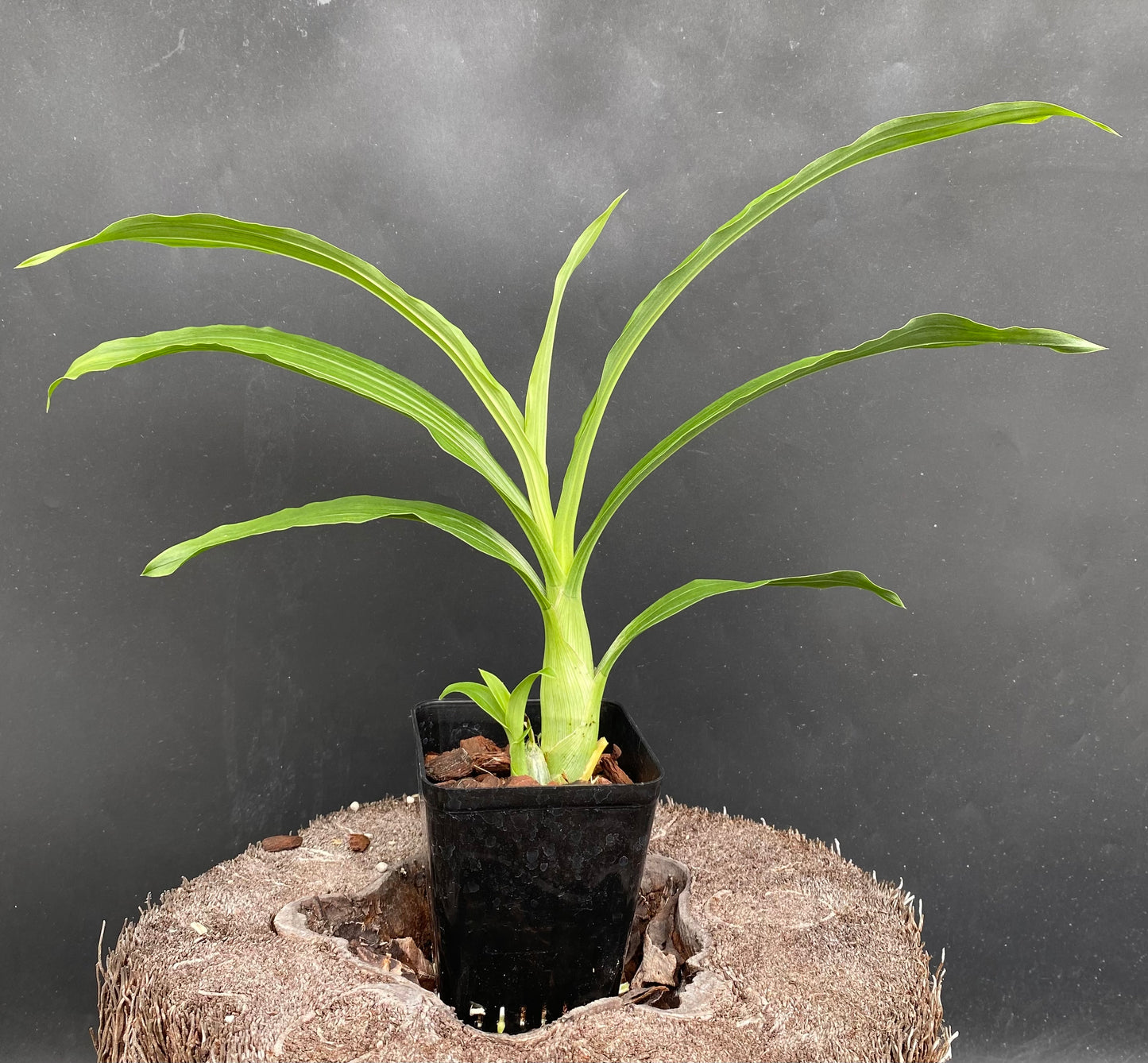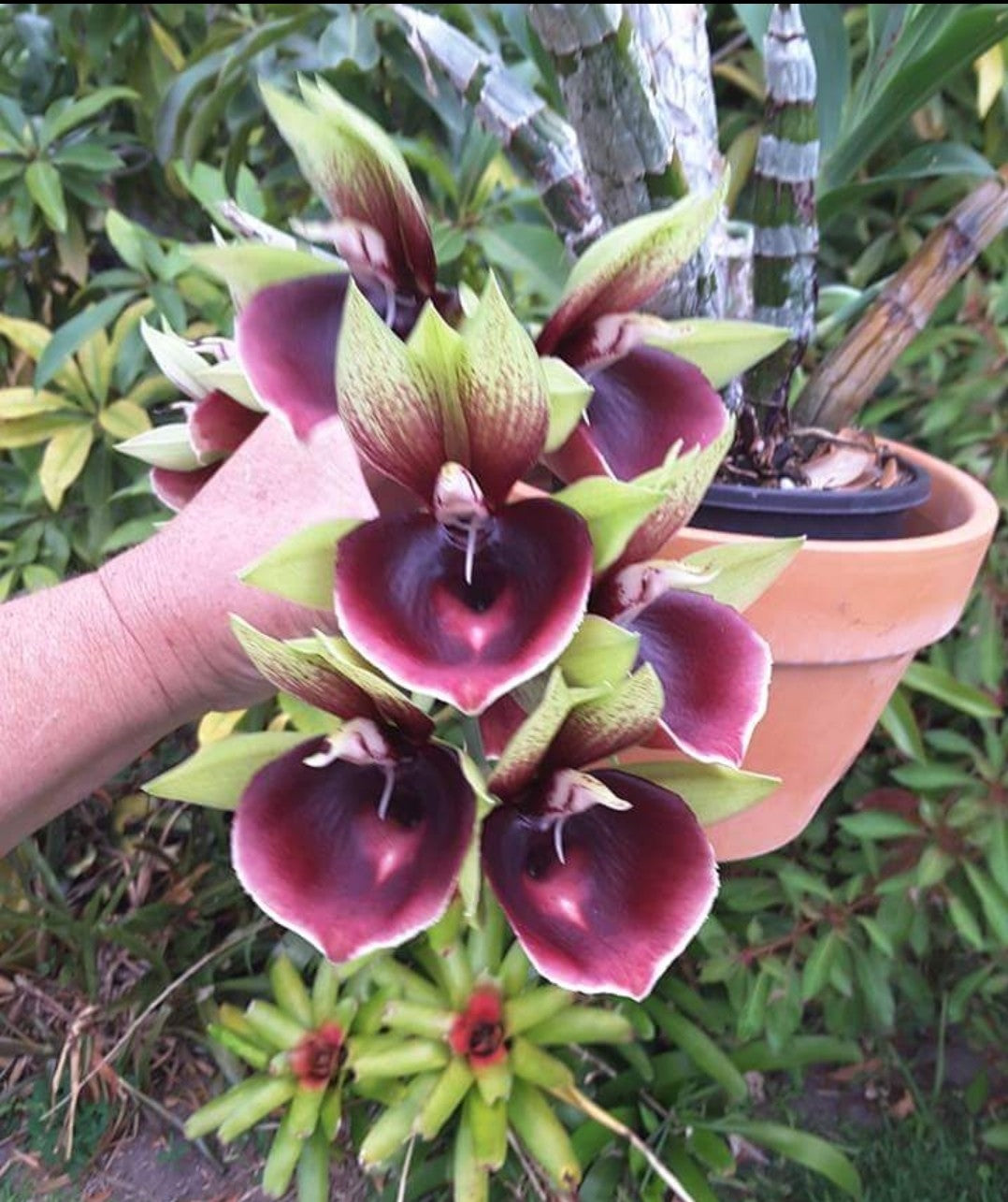Kalapana Orchid Farm
Ctsm. Mark's Red Hermosa
Ctsm. Mark's Red Hermosa
Couldn't load pickup availability
Catasetum Mark's Red Hermosa is a striking hybrid, registered with the Royal Horticultural Society by M. Margolis in 2012. It certainly lives up to the promise of its name with showy flowers that often appear in vibrant and intense red tones. It's a cross between Catasetum pileatum and Catasetum Alexis Pardo. To appreciate this beauty, let's explore its heritage:
Catasetum pileatum is a very significant species in Catasetum breeding, and it's a parent to many remarkable hybrids, including 'Mark's Red Hermosa'. It hails from Venezuela, Colombia, and Trinidad, growing as an epiphyte in seasonally dry tropical forests at low elevations. It thrives in warm temperatures and requires a distinct dry season for dormancy. Ctsm. pileatum is famous for its large, flat, often showy lips, which can be quite variable in shape, sometimes having fimbriated or ruffled edges, and range in color from white to yellow, orange, or even red. It imparts excellent size and substance to its progeny.
Catasetum Alexis Pardo is a hybrid itself, which contributes to the complexity and robust nature of 'Mark's Red Hermosa'. Its own parentage further influences the floral characteristics seen in this newer cross.
Several clones of Catasetum Mark's Red Hermosa have received awards from the American Orchid Society, attesting to their exceptional quality.
What makes Catasetum Mark's Red Hermosa so captivating are its flowers, which are typically 3 to 4 inches in diameter. The sepals and petals are usually a captivating blend of red and green, often with a deep, rich burgundy or maroon overlay that can appear almost solid red in some clones, or with intriguing splashes and spots. The lip is often the focal point – large, waxy, and often a very intense solid red or deep maroon, providing a dramatic contrast to the greenish tones of the rest of the flower. Many clones of 'Mark's Red Hermosa' are known for being fragrant, emitting a pleasant, often sweet scent. These plants are quite floriferous, producing multiple flowers on upright spikes from the base of the pseudobulbs, usually in the late summer or fall.
As a Catasetum, 'Mark's Red Hermosa' exhibits the genus's characteristic deciduous growth habit. It forms robust, spindle-shaped pseudobulbs, acting as water and nutrient reservoirs. During the active growing season, these plants produce several broad, plicate (pleated) leaves that can grow to lengths of 10 to 18 inches. As the growing season concludes and the pseudobulbs fully mature, the leaves will naturally yellow and drop, signaling the start of its dormancy period. The flower spikes typically emerge from the base of these mature, leafless pseudobulbs.
Care Instructions:
Light: Provide bright light, similar to what a Cattleya alliance orchid would appreciate. This means plenty of indirect light, with some direct sun exposure in the morning or late afternoon. Too little light can hinder flowering.
Water: During the active growing season (when new growths are emerging and roots are actively developing), water generously and frequently, allowing the potting mix to just approach dryness between waterings. As the leaves begin to yellow and drop in late fall, gradually reduce watering. During the dormant period (when the plant is leafless), cease watering almost entirely. A very light misting or a small sip of water might be given only if the pseudobulbs show significant shriveling. Resume regular watering only when new growth emerges and new roots are 3 to 5 inches long.
Temperature: This hybrid thrives in warm temperatures. During the active growth period, day temperatures should be between 75°F and 95°F, with night temperatures ideally in the range of 60°F to 70°F. During dormancy, slightly cooler temperatures are acceptable, but avoid prolonged exposure below 55°F.
Humidity: Maintain moderate to high humidity, ideally between 50% and 70%, especially during the active growing season. Ensure good air circulation to prevent fungal issues, particularly when humidity is high.
Potting Medium: A very well-draining, yet somewhat moisture-retentive, orchid mix is ideal. Common components include medium-grade fir bark, perlite, and charcoal. Some growers also have success with sphagnum moss, especially for smaller plants or in drier environments. Repot annually at the beginning of the new growth cycle, just as new roots are emerging, as Catasetums prefer fresh media.
Please note: As with all deciduous orchids, your Ctsm. Mark's Red Hermosa will lose its leaves and enter dormancy in winter while the energy is directed into forming new pseudobulbs and eventually flower spikes. Reduce watering during dormancy.
We are currently offering spiking plants in very limited supply. Grown in 4" pots.
Share
